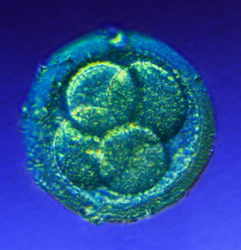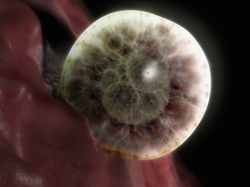CHANGES TO MUM
On average a woman’s menstrual cycle is generally 28 days long, therefore conception normally occurs around day 14 of your cycle. You are most fertile at this point, 2 weeks after your last period and 2 weeks before your next.

Around Week 8 of Pregnancy an Ultrasound will Confirm Your EDD Calculated Using the Date of Your Last Menstrual Period (LMP).
However conception is most likely to be on this 14th day of your cycle, pregnancy is calculated from the date of your last menstrual period (LMP); day 1 of your period.
Your estimated date of delivery (EDD) is calculated using your LMP, therefore you will be asked this date if your pregnancy test is possible. An ultrasound will also confirm these dates and give you your due date.
Your pregnancy is measured in gestational weeks rather than from the actual day of conception. A pregnancy is made up of 40 gestational weeks, therefore weeks 1 and 2 of pregnancy the baby is considered waiting to be conceived.
At the beginning of this week of pregnancy your baby has only just been created and will be considered only one week old by the end of week 3. Once the blastocyst is fully implanted in your uterine cavity, the baby will use your blood supply for nourishment.
Normally by the end of this week you would be starting your period, and will be checking for a missed cycle to indicate pregnancy. About 1 in 3 women have light bleeding when you would normally expect your period to begin.
Generally this is a very small amount of blood or spotting, often referred to as implantation bleeding, caused by the fertilised egg implanting itself in the uterine cavity. Unless it is accompanied by cramping, backache or increased bleeding there is nothing to be concerned about.
CHANGES TO BUB
During week 3 of pregnancy your baby is just an egg and is very small, it does not resemble a fetus or a baby.
Simply put your fertilised egg is a group of cells that will grow very fast, dividing within a matter of hours to create a two cell zygote, then a four cell zygote, then eventually after four days a blastocyst.
Incredibly a blastocyst has around one hundred cells but is only the size of a pin head! No wonder you don’t know you are pregnant yet.
Before the blastocyst has implanted itself into the lining of the uterus, it actually draws liquid to create a pocket in its centre. A division is created by this fluid which results in an inner and outer cell mass being formed.
The inner mass will form the embryo (your baby) and the outer cells known as the trophoblast will become the placenta.
Although your baby has only just been made there are many factors that are already predetermined by DNA, such as the sex of your baby, hair colour and texture, eye colour and even their height and weight to a certain point.
But pregnancy is a waiting game, and you will have approximately 37 more weeks until you get the opportunity to meet your wonderful creation!













